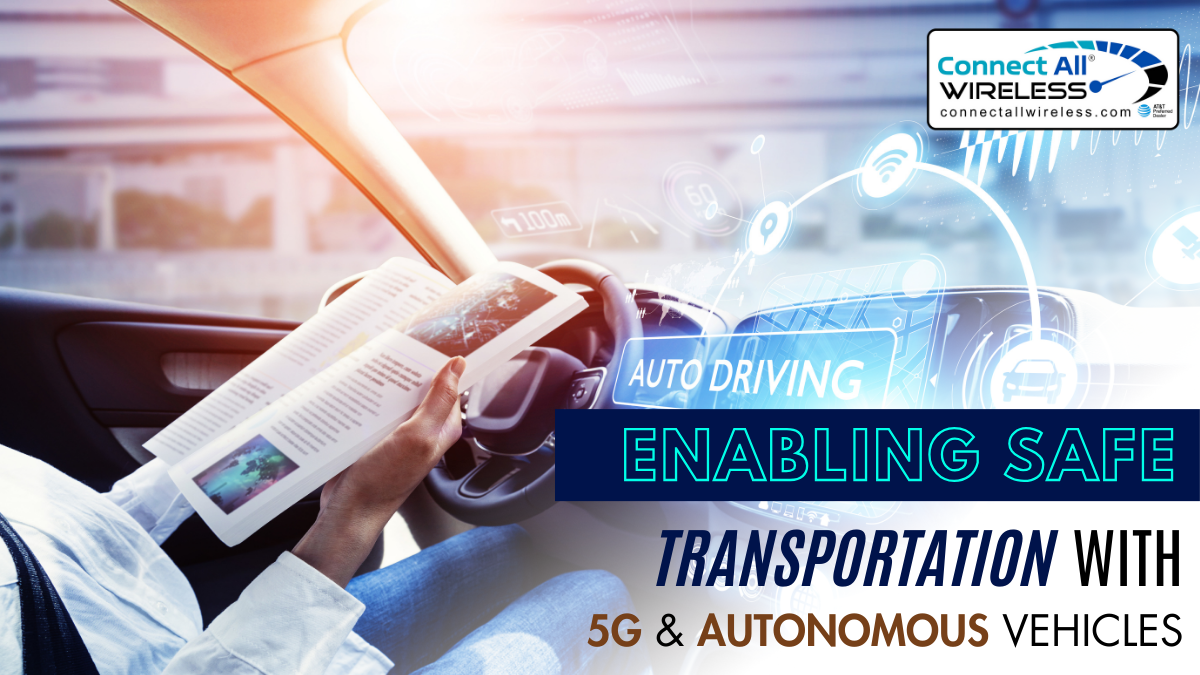Enabling Safe Transportation with 5G and Autonomous Vehicles
April 4, 2024In the realm of transportation, safety has always been a paramount concern. With the advent of autonomous vehicles (AVs), the potential to revolutionize road safety is within reach. However, the full realization of this potential hinges on robust connectivity infrastructure. Enter 5G—the fifth-generation cellular network technology poised to transform not only communication but also transportation. In this blog post, we’ll delve into how the convergence of 5G and autonomous vehicles can pave the way for safer transportation systems.
The Promise of Autonomous Vehicles
Autonomous vehicles hold the promise of significantly reducing road accidents, which are often caused by human error. By eliminating human factors such as distraction, fatigue, and impairment, AVs can potentially make roads safer for everyone. These vehicles rely on a plethora of sensors, cameras, and algorithms to perceive and navigate the environment, making split-second decisions to ensure safety.
The Role of 5G Connectivity
While AVs are laden with sophisticated onboard systems, their true potential can only be unlocked with seamless connectivity. This is where 5G comes into play. Unlike its predecessors, 5G offers ultra-low latency, high reliability, and massive bandwidth—attributes that are crucial for real-time communication between vehicles, infrastructure, and the cloud.
A. Ultra-Low Latency: In the context of AVs, latency refers to the delay between sending a command and receiving a response—a delay that must be minimized to ensure timely reactions. With 5G’s ultra-low latency capabilities, AVs can communicate with each other and with infrastructure instantaneously, enabling swift responses to changing road conditions.
B. High Reliability: AVs rely on a constant stream of data to make informed decisions. 5G’s high reliability ensures that this data exchange remains uninterrupted even in densely populated urban areas or remote locations, minimizing the risk of communication breakdowns that could compromise safety.
C. Massive Bandwidth: The sheer volume of data generated by AVs necessitates a robust infrastructure capable of handling immense bandwidth requirements. 5G’s massive bandwidth not only accommodates this data deluge but also supports high-definition video streaming, enabling AVs to gather and process information with unparalleled clarity.
Enhancing Safety Through Connectivity
The synergy between 5G and AVs opens up a myriad of possibilities for enhancing safety on the roads:
A. Cooperative Perception: By sharing real-time data with nearby vehicles, AVs can extend their perception beyond line-of-sight, effectively “seeing” around corners or through obstacles. This cooperative perception enables proactive hazard detection and avoidance, mitigating the risk of collisions.
B. Predictive Analytics: Utilizing machine learning algorithms and cloud-based processing, AVs can analyze vast datasets to anticipate potential risks and adapt their behavior accordingly. For instance, they can predict the trajectory of other vehicles or pedestrians, preemptively adjusting their speed or route to prevent accidents.
C. Emergency Response: In the event of an emergency, such as sudden braking or a collision, AVs can instantly communicate their status and location to nearby vehicles and emergency services via 5G. This facilitates swift coordination and assistance, minimizing the impact of accidents and expediting rescue efforts.
Overcoming Challenges
While the convergence of 5G and AVs holds immense promise for safer transportation, several challenges must be addressed:
A. Infrastructure Deployment: The widespread adoption of 5G infrastructure is crucial for realizing its potential in the transportation sector. Governments and industry stakeholders must collaborate to expedite the deployment of 5G networks, particularly in underserved areas, to ensure universal connectivity.
B. Data Security and Privacy: As AVs become increasingly reliant on connectivity, safeguarding the integrity and privacy of data becomes paramount. Robust cybersecurity measures must be implemented to protect against cyber threats and unauthorized access, instilling trust in the reliability of autonomous systems.
C. Regulatory Frameworks: The regulatory landscape must evolve to accommodate the unique challenges and opportunities presented by AVs and 5G connectivity. Clear guidelines and standards are needed to ensure the safe and responsible deployment of autonomous technologies while addressing liability, insurance, and ethical considerations.
Conclusion
In conclusion, the integration of 5G technology and autonomous vehicles represents a monumental step forward in advancing road safety and transportation efficiency. By leveraging the unparalleled capabilities of 5G connectivity, AVs can communicate, perceive, and respond to their environment in real-time, significantly reducing the risk of accidents caused by human error. However, to fully realize the potential of this synergy, concerted efforts are needed to address infrastructure deployment, cybersecurity concerns, and regulatory frameworks. With initiatives like 5G WiFi Internet in Michigan, we can accelerate the transition towards a future where safe and seamless transportation is not just a possibility, but a reality that benefits communities worldwide.


